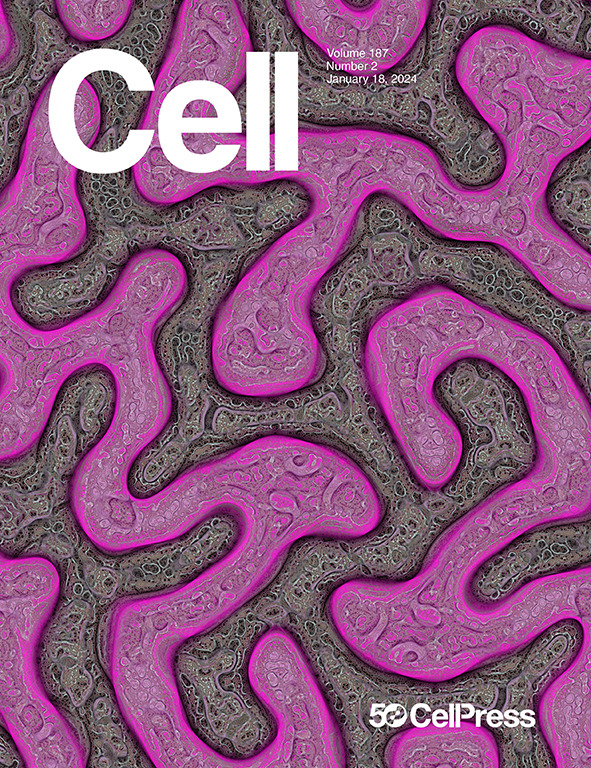The chromosome folding problem and how cells solve it
IF 45.5
1区 生物学
Q1 BIOCHEMISTRY & MOLECULAR BIOLOGY
引用次数: 0
Abstract
Every cell must solve the problem of how to fold its genome. We describe how the folded state of chromosomes is the result of the combined activity of multiple conserved mechanisms. Homotypic affinity-driven interactions lead to spatial partitioning of active and inactive loci. Molecular motors fold chromosomes through loop extrusion. Topological features such as supercoiling and entanglements contribute to chromosome folding and its dynamics, and tethering loci to sub-nuclear structures adds additional constraints. Dramatically diverse chromosome conformations observed throughout the cell cycle and across the tree of life can be explained through differential regulation and implementation of these basic mechanisms. We propose that the first functions of chromosome folding are to mediate genome replication, compaction, and segregation and that mechanisms of folding have subsequently been co-opted for other roles, including long-range gene regulation, in different conditions, cell types, and species.染色体折叠问题及细胞如何解决这一问题
每个细胞都必须解决如何折叠基因组的问题。我们描述了染色体的折叠状态是多种保守机制共同作用的结果。同型亲和力驱动的相互作用导致了活性和非活性基因座的空间分区。分子马达通过环挤压折叠染色体。超卷曲和缠结等拓扑特征有助于染色体的折叠及其动态变化,而将基因座拴系在亚核结构上则增加了额外的限制。在整个细胞周期和整个生命树中观察到的染色体构象的巨大差异,可以通过这些基本机制的不同调控和实施来解释。我们提出,染色体折叠的最初功能是介导基因组复制、压实和分离,折叠机制随后在不同条件、细胞类型和物种中被用于其他作用,包括长程基因调控。
本文章由计算机程序翻译,如有差异,请以英文原文为准。
求助全文
约1分钟内获得全文
求助全文
来源期刊

Cell
生物-生化与分子生物学
CiteScore
110.00
自引率
0.80%
发文量
396
审稿时长
2 months
期刊介绍:
Cells is an international, peer-reviewed, open access journal that focuses on cell biology, molecular biology, and biophysics. It is affiliated with several societies, including the Spanish Society for Biochemistry and Molecular Biology (SEBBM), Nordic Autophagy Society (NAS), Spanish Society of Hematology and Hemotherapy (SEHH), and Society for Regenerative Medicine (Russian Federation) (RPO).
The journal publishes research findings of significant importance in various areas of experimental biology, such as cell biology, molecular biology, neuroscience, immunology, virology, microbiology, cancer, human genetics, systems biology, signaling, and disease mechanisms and therapeutics. The primary criterion for considering papers is whether the results contribute to significant conceptual advances or raise thought-provoking questions and hypotheses related to interesting and important biological inquiries.
In addition to primary research articles presented in four formats, Cells also features review and opinion articles in its "leading edge" section, discussing recent research advancements and topics of interest to its wide readership.
 求助内容:
求助内容: 应助结果提醒方式:
应助结果提醒方式:


